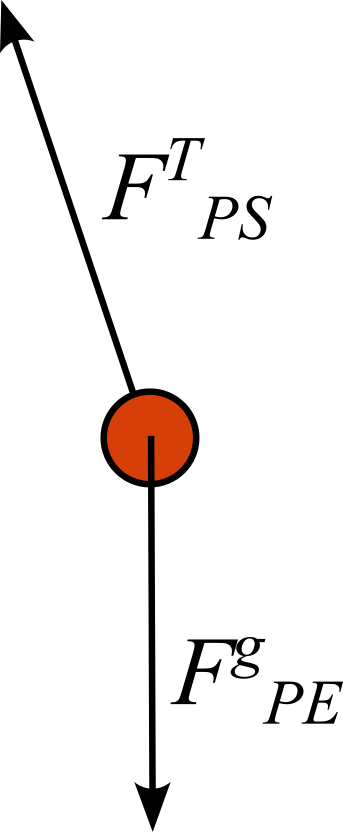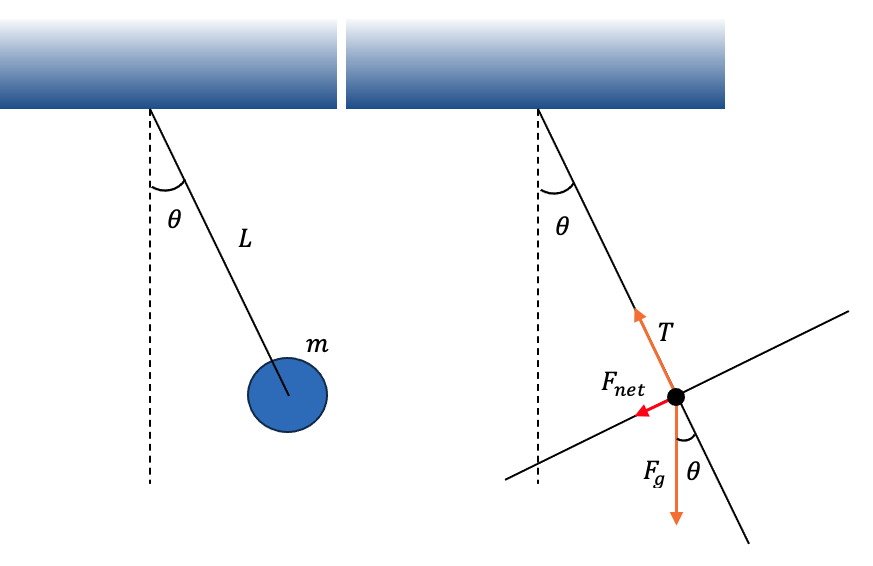1. Finding Acceleration.
(a)
Sketch and label a Free-body diagram for the instant shown in the figure.
(b)
Determine the moment of inertia for the system of the pendulum about an axis of rotation through the top of the string (marked by \(\times\) in the figure).
(c)
Determine the net torque on the pendulum about the top of the string (marked by \(\times\) in the figure).
(d)
Use the Angular Law of Motion to solve for the angular acceleration



